-
 Bitcoin
Bitcoin $99,594.2189
-3.59% -
 Ethereum
Ethereum $2,188.5793
-9.00% -
 Tether USDt
Tether USDt $1.0001
-0.02% -
 XRP
XRP $1.9745
-5.82% -
 BNB
BNB $608.9511
-3.73% -
 Solana
Solana $130.4575
-5.93% -
 USDC
USDC $1.0000
0.01% -
 TRON
TRON $0.2637
-3.59% -
 Dogecoin
Dogecoin $0.1493
-5.97% -
 Cardano
Cardano $0.5322
-6.72% -
 Hyperliquid
Hyperliquid $33.9044
3.33% -
 Bitcoin Cash
Bitcoin Cash $449.6411
-5.46% -
 UNUS SED LEO
UNUS SED LEO $8.9629
0.43% -
 Sui
Sui $2.3943
-8.35% -
 Chainlink
Chainlink $11.4402
-7.83% -
 Stellar
Stellar $0.2241
-6.49% -
 Avalanche
Avalanche $16.1489
-4.24% -
 Toncoin
Toncoin $2.7182
-5.94% -
 Shiba Inu
Shiba Inu $0.0...01040
-5.72% -
 Litecoin
Litecoin $78.7882
-4.07% -
 Ethena USDe
Ethena USDe $1.0004
-0.01% -
 Hedera
Hedera $0.1305
-7.45% -
 Monero
Monero $297.0030
-5.32% -
 Dai
Dai $0.9997
-0.02% -
 Polkadot
Polkadot $3.1834
-6.03% -
 Bitget Token
Bitget Token $3.9788
-7.03% -
 Uniswap
Uniswap $6.1327
-10.62% -
 Pepe
Pepe $0.0...08689
-8.30% -
 Pi
Pi $0.4826
-9.65% -
 Aave
Aave $219.8043
-9.69%
How to set the cryptocurrency SAR cycle?
The SAR cycle, using the Parabolic SAR indicator, helps crypto traders set entry and exit points by identifying trends and adjusting stop-loss orders accordingly.
May 24, 2025 at 01:07 pm
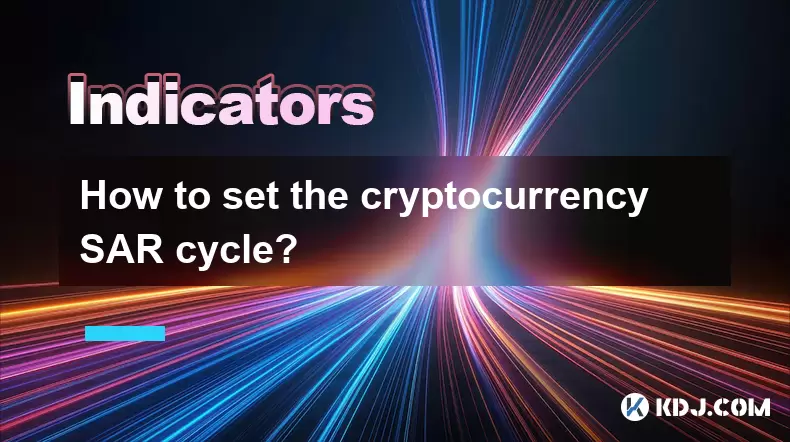
Understanding the SAR Cycle in Cryptocurrency
The SAR (Stop and Reverse) cycle is a popular trading strategy used in the cryptocurrency market to determine entry and exit points. It is based on the Parabolic SAR indicator, which helps traders identify potential reversals in the price direction of an asset. In the context of cryptocurrencies, setting the SAR cycle involves understanding the indicator's parameters and applying them effectively to your trading strategy.
What is the Parabolic SAR Indicator?
The Parabolic SAR is a technical analysis tool that provides potential reversal points in the price of an asset. It appears as a series of dots either above or below the price chart. When the dots are below the price, it suggests an uptrend, and when they are above the price, it indicates a downtrend. The indicator is designed to help traders set trailing stop-loss orders and identify when to switch from a long to a short position or vice versa.
Setting Up the Parabolic SAR Indicator
To set up the Parabolic SAR indicator for cryptocurrency trading, follow these steps:
- Choose a Trading Platform: Select a trading platform that supports the Parabolic SAR indicator. Popular platforms include TradingView, MetaTrader, and Binance.
- Add the Indicator: Navigate to the indicators section of your chosen platform and add the Parabolic SAR indicator to your chart.
- Adjust the Parameters: The default settings for the Parabolic SAR are usually an acceleration factor of 0.02 and a maximum value of 0.20. These can be adjusted based on your trading strategy and the volatility of the cryptocurrency you are trading.
Applying the SAR Cycle to Cryptocurrency Trading
Once the Parabolic SAR indicator is set up, you can start applying the SAR cycle to your trading. Here's how:
- Identify the Trend: Observe the position of the SAR dots relative to the price. If the dots are below the price, it indicates an uptrend, and you should consider buying. If the dots are above the price, it suggests a downtrend, and you may want to sell or short.
- Set Entry Points: Use the SAR dots to determine your entry points. For example, in an uptrend, you might enter a long position when the price moves above the SAR dot.
- Set Exit Points: The SAR dots can also help you set exit points. If you are in a long position and the price falls below the SAR dot, it might be time to exit the trade.
- Adjust the Stop-Loss: As the price moves in your favor, adjust your stop-loss order to follow the SAR dots. This helps lock in profits and protect against sudden reversals.
Fine-Tuning the SAR Cycle for Different Cryptocurrencies
Different cryptocurrencies may require different settings for the Parabolic SAR indicator due to varying levels of volatility. Here's how to fine-tune the SAR cycle for specific cryptocurrencies:
- Bitcoin (BTC): Bitcoin is generally less volatile than altcoins. You might find that the default settings work well for Bitcoin, but you can experiment with a slightly lower acceleration factor (e.g., 0.015) for smoother signals.
- Ethereum (ETH): Ethereum can be more volatile than Bitcoin. Consider increasing the acceleration factor to 0.025 to capture more frequent signals.
- Altcoins: Altcoins often exhibit higher volatility. You may need to increase the acceleration factor to 0.03 or higher to adapt to rapid price movements.
Combining the SAR Cycle with Other Indicators
While the Parabolic SAR can be effective on its own, combining it with other indicators can enhance your trading strategy. Here are some popular combinations:
- SAR and Moving Averages: Use a moving average to confirm the trend identified by the SAR. For example, if the SAR indicates an uptrend and the price is above a 50-day moving average, it strengthens the bullish signal.
- SAR and RSI: The Relative Strength Index (RSI) can help you gauge the strength of the trend. If the SAR suggests an uptrend and the RSI is above 50, it supports the bullish outlook.
- SAR and MACD: The Moving Average Convergence Divergence (MACD) can provide additional confirmation of trend changes. If the SAR indicates a trend reversal and the MACD line crosses the signal line, it reinforces the reversal signal.
Practical Example of Using the SAR Cycle
Let's walk through a practical example of using the SAR cycle to trade Bitcoin:
- Initial Setup: Add the Parabolic SAR indicator to your Bitcoin chart on TradingView with the default settings (acceleration factor 0.02, maximum value 0.20).
- Identify the Trend: You notice that the SAR dots are below the price, indicating an uptrend.
- Enter the Trade: You decide to enter a long position when the price moves above the latest SAR dot.
- Monitor the Trade: As the price continues to rise, you adjust your stop-loss order to follow the SAR dots, locking in profits.
- Exit the Trade: When the price falls below the SAR dot, you exit the trade to secure your gains.
Frequently Asked Questions
Q: Can the SAR cycle be used for short-term trading?
A: Yes, the SAR cycle can be used for short-term trading. By adjusting the acceleration factor to a higher value, you can capture more frequent signals, which is suitable for short-term trading strategies.
Q: How does the SAR cycle perform in a sideways market?
A: The SAR cycle can generate false signals in a sideways market, leading to potential losses. It is best used in trending markets where the price is moving consistently in one direction.
Q: Is the SAR cycle suitable for all types of cryptocurrencies?
A: While the SAR cycle can be applied to all cryptocurrencies, its effectiveness may vary based on the volatility of the asset. It is crucial to adjust the indicator's parameters to suit the specific cryptocurrency you are trading.
Q: Can the SAR cycle be used in conjunction with automated trading systems?
A: Yes, the SAR cycle can be integrated into automated trading systems. Many trading platforms allow you to set up algorithmic trading strategies that include the Parabolic SAR indicator, enabling you to execute trades automatically based on the SAR signals.
Disclaimer:info@kdj.com
The information provided is not trading advice. kdj.com does not assume any responsibility for any investments made based on the information provided in this article. Cryptocurrencies are highly volatile and it is highly recommended that you invest with caution after thorough research!
If you believe that the content used on this website infringes your copyright, please contact us immediately (info@kdj.com) and we will delete it promptly.
- Altcoins Under Pressure: Cardano and XRP Face Critical Tests
- 2025-06-23 12:25:12
- Rare Coin Fever in Wiltshire: Auctions, Errors, and Olympic Gold!
- 2025-06-23 12:25:12
- XRP Price Under Pressure: War Fears and Market Sentiment
- 2025-06-23 12:30:12
- HAI Token Private Key Leak: What Happened and How to Stay Safe
- 2025-06-23 12:45:12
- Texas Goes All In: Bitcoin Reserve Signals Big State Embrace
- 2025-06-23 12:45:12
- Pi Network's Price Plunge: Crash, Scammer Accusations, and What's Next?
- 2025-06-23 13:05:12
Related knowledge
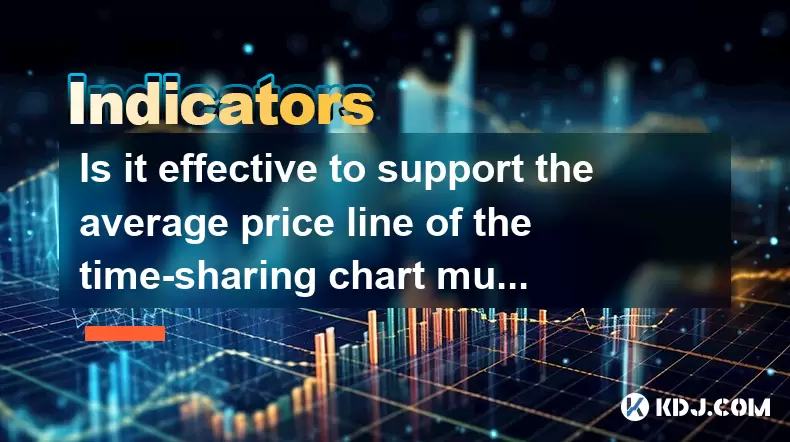
Is it effective to support the average price line of the time-sharing chart multiple times?
Jun 23,2025 at 01:36pm
Understanding the Average Price Line in Time-Sharing ChartsIn cryptocurrency trading, time-sharing charts refer to real-time price charts that display price movements over short intervals, often within a single trading day. Within these charts, the average price line, also known as the Volume Weighted Average Price (VWAP), is a commonly used technical i...
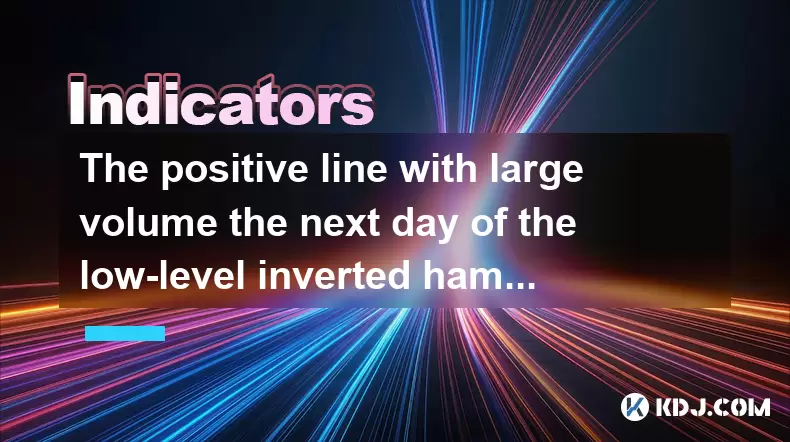
The positive line with large volume the next day of the low-level inverted hammer line confirms the reversal?
Jun 23,2025 at 01:21pm
Understanding the Low-Level Inverted Hammer LineThe inverted hammer line is a single candlestick pattern that typically appears at the end of a downtrend. It has a small real body near the bottom of the trading range and a long upper shadow, indicating that bulls attempted to push prices higher but were met with selling pressure. When this pattern forms...
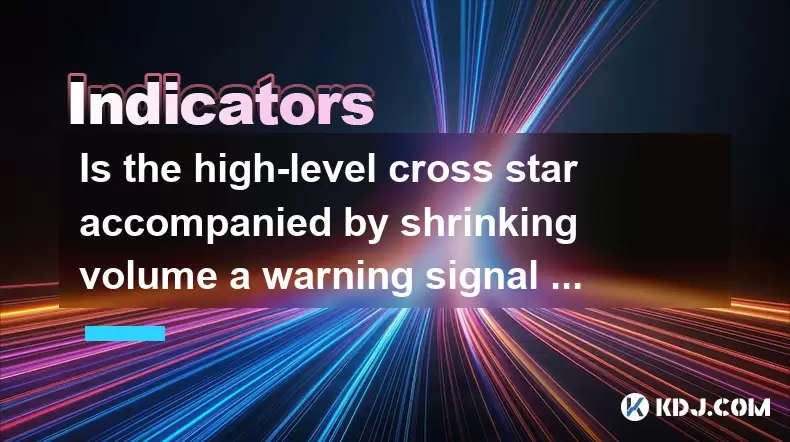
Is the high-level cross star accompanied by shrinking volume a warning signal of peaking?
Jun 23,2025 at 01:28pm
Understanding High-Level Cross Star PatternsIn the world of cryptocurrency trading, candlestick patterns are essential tools for technical analysis. One such pattern is the high-level cross star, which appears as a doji or near-doji candle at a significant resistance level. This pattern often indicates indecision in the market and can be interpreted as ...
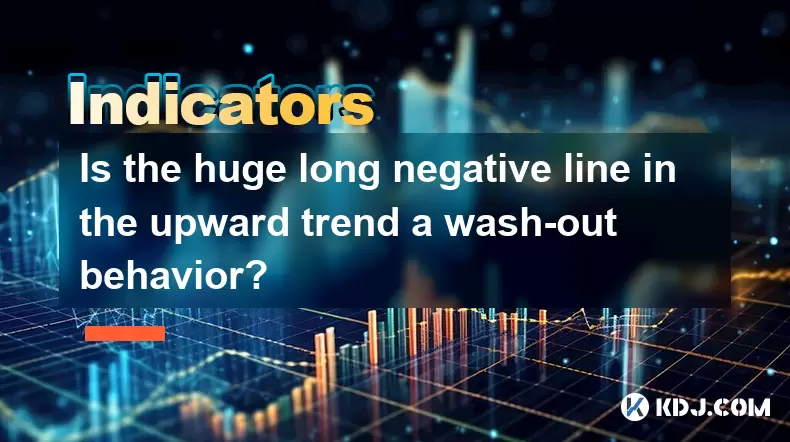
Is the huge long negative line in the upward trend a wash-out behavior?
Jun 23,2025 at 12:49pm
Understanding the Long Negative Candlestick in an Uprising TrendA long negative candlestick, often referred to as a long red or bearish candle, appearing during an upward trend can raise concerns among traders and investors. This pattern typically indicates a sudden and significant drop in price after a period of rising prices. It is often interpreted a...

Can the EXPMA golden cross stand on the 5-day line at the same time?
Jun 23,2025 at 11:42am
Understanding the EXPMA Indicator in Cryptocurrency TradingThe Exponential Moving Average (EXPMA) is a popular technical analysis tool used by cryptocurrency traders to identify trends and potential reversal points. Unlike simple moving averages, the EXPMA gives more weight to recent price data, making it more responsive to current market conditions. In...

Does the second surge in the RSI overbought zone induce more?
Jun 22,2025 at 08:35am
Understanding the RSI Overbought ZoneThe Relative Strength Index (RSI) is a momentum oscillator commonly used in technical analysis to measure the speed and change of price movements. It ranges from 0 to 100, with values above 70 typically considered overbought and values below 30 considered oversold. When the RSI enters the overbought zone for the firs...

Is it effective to support the average price line of the time-sharing chart multiple times?
Jun 23,2025 at 01:36pm
Understanding the Average Price Line in Time-Sharing ChartsIn cryptocurrency trading, time-sharing charts refer to real-time price charts that display price movements over short intervals, often within a single trading day. Within these charts, the average price line, also known as the Volume Weighted Average Price (VWAP), is a commonly used technical i...

The positive line with large volume the next day of the low-level inverted hammer line confirms the reversal?
Jun 23,2025 at 01:21pm
Understanding the Low-Level Inverted Hammer LineThe inverted hammer line is a single candlestick pattern that typically appears at the end of a downtrend. It has a small real body near the bottom of the trading range and a long upper shadow, indicating that bulls attempted to push prices higher but were met with selling pressure. When this pattern forms...

Is the high-level cross star accompanied by shrinking volume a warning signal of peaking?
Jun 23,2025 at 01:28pm
Understanding High-Level Cross Star PatternsIn the world of cryptocurrency trading, candlestick patterns are essential tools for technical analysis. One such pattern is the high-level cross star, which appears as a doji or near-doji candle at a significant resistance level. This pattern often indicates indecision in the market and can be interpreted as ...

Is the huge long negative line in the upward trend a wash-out behavior?
Jun 23,2025 at 12:49pm
Understanding the Long Negative Candlestick in an Uprising TrendA long negative candlestick, often referred to as a long red or bearish candle, appearing during an upward trend can raise concerns among traders and investors. This pattern typically indicates a sudden and significant drop in price after a period of rising prices. It is often interpreted a...

Can the EXPMA golden cross stand on the 5-day line at the same time?
Jun 23,2025 at 11:42am
Understanding the EXPMA Indicator in Cryptocurrency TradingThe Exponential Moving Average (EXPMA) is a popular technical analysis tool used by cryptocurrency traders to identify trends and potential reversal points. Unlike simple moving averages, the EXPMA gives more weight to recent price data, making it more responsive to current market conditions. In...

Does the second surge in the RSI overbought zone induce more?
Jun 22,2025 at 08:35am
Understanding the RSI Overbought ZoneThe Relative Strength Index (RSI) is a momentum oscillator commonly used in technical analysis to measure the speed and change of price movements. It ranges from 0 to 100, with values above 70 typically considered overbought and values below 30 considered oversold. When the RSI enters the overbought zone for the firs...
See all articles

























































































